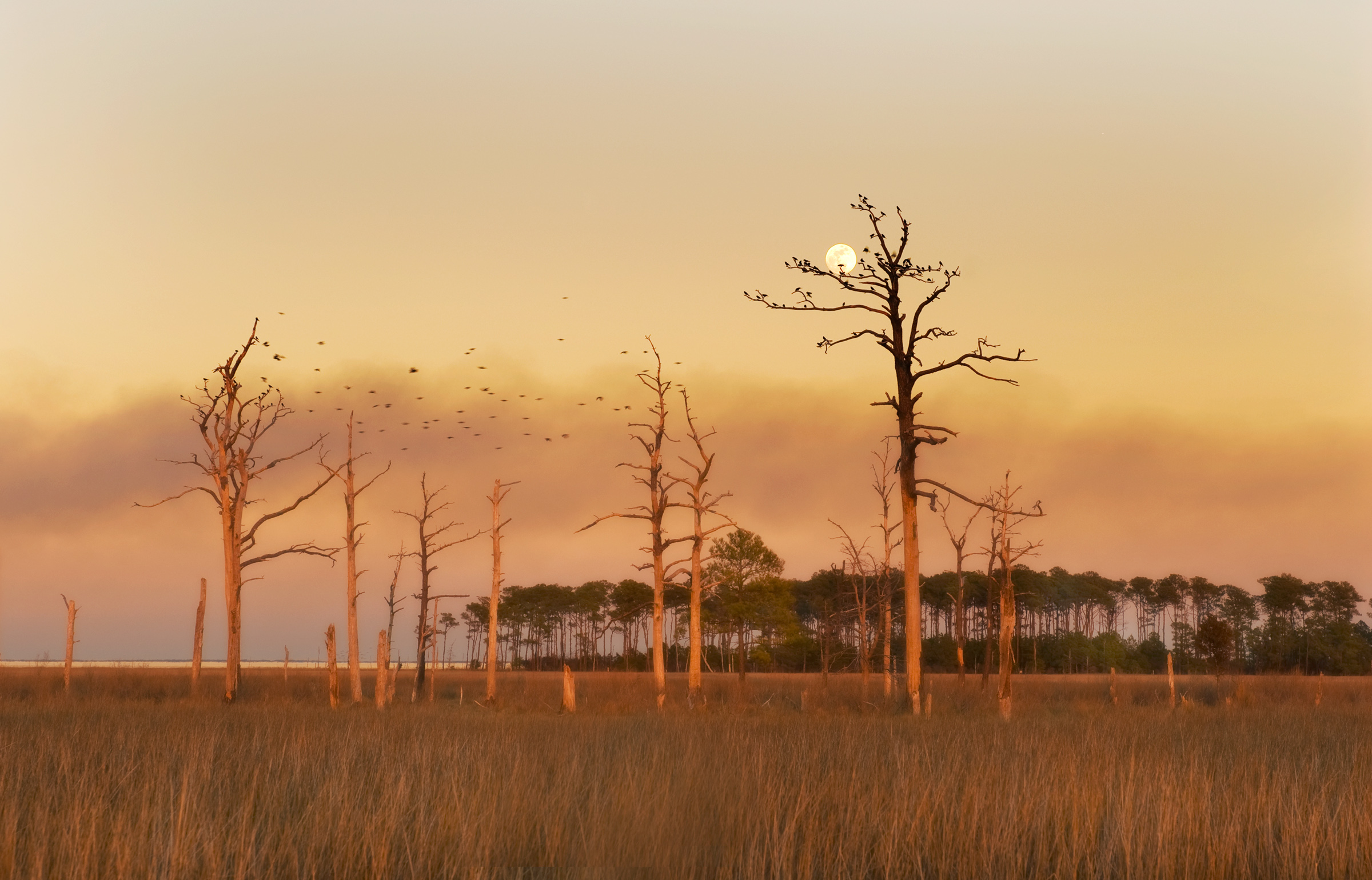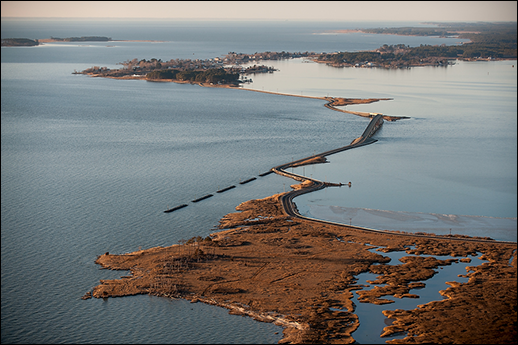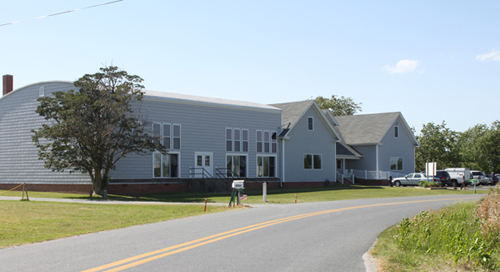Random musings of one Columbian, a place to connect and to learn more about issues and events in Howard County. If you would like to have me blog on an issue, organization or an upcoming community service event email me at duanestclair@gmail.com To follow HoCo Connect by email enter your email below.
Saturday, July 30, 2016
Ellicott City flooding
From the Columbia Patch
From Ellicott City Patch
More videos
Another video
One reported dead in flooding
#hocoblogs
Friday, July 29, 2016
Help Howard County students with school supplies

In just a few weeks students will return to schools here in Howard County. I can hear the moans of our youth already! But with the beginning of the school year the number of students who don't have the supplies they need creates a situation where many of us should reach out to help. Every year the "Prepare for Success" program works with the local Community Action Agency to provide backpacks and supplies for these students. Every $25 helps with school supplies for one student. Here is where you can donate to that program.
#hocoblogs
Friday, July 22, 2016
Blogger Guru Jessie Newburn's book on her Uber driving experience now on Amazon

Locally we bloggers know Jessie for setting up the website HoCo Blogs that publicizes many of our local blogs. Now we can return the favor by downloading Jesse's self published book on her experiences as an Uber driver. I have been reading her blog posts on her experiences and have used Uber a few times as a rider and it is fascinating to set the other side of using a service like Uber. Here is the link to download her Kindle copy free only today.
#hocoblogs
Wednesday, July 20, 2016
Some perspective on the Affordable Health Care Act's results
There is a lot of noise about how the Affordable Care Act is a failure and needs to be repealed and replaced. The rhetoric is not supported by the facts. In a recent Journal of the American Medical Association here is what their findings were:
"Findings: The Affordable Care Act has made significant progress toward solving long-standing challenges facing the US health care system related to access, affordability, and quality of care. Since the Affordable Care Act became law, the uninsured rate has declined by 43%, from 16.0% in 2010 to 9.1% in 2015, primarily because of the law’s reforms. Research has documented accompanying improvements in access to care (for example, an estimated reduction in the share of nonelderly adults unable to afford care of 5.5 percentage points), financial security (for example, an estimated reduction in debts sent to collection of $600-$1000 per person gaining Medicaid coverage), and health (for example, an estimated reduction in the share of nonelderly adults reporting fair or poor health of 3.4 percentage points). The law has also begun the process of transforming health care payment systems, with an estimated 30% of traditional Medicare payments now flowing through alternative payment models like bundled payments or accountable care organizations. These and related reforms have contributed to a sustained period of slow growth in per-enrollee health care spending and improvements in health care quality. Despite this progress, major opportunities to improve the health care system remain.
Conclusions and Relevance: Policy makers should build on progress made by the Affordable Care Act by continuing to implement the Health Insurance Marketplaces and delivery system reform, increasing federal financial assistance for Marketplace enrollees, introducing a public plan option in areas lacking individual market competition, and taking actions to reduce prescription drug costs. Although partisanship and special interest opposition remain, experience with the Affordable Care Act demonstrates that positive change is achievable on some of the nation’s most complex challenges.
The next big improvement to our health care system is to bring back a public option that will provide and alternative to private providers and improve cost control of health care spending. This improvement was lost in the Senate by only a single vote in the effort to gain closure of the Republican filibuster against the bill. It is doubtful that the Congress will go along with bringing back this option as long as the Republicans are in control but eventually we will achieve more aspects of a single payer system in spite of political opposition from conservatives.
#hocopolitics
"Findings: The Affordable Care Act has made significant progress toward solving long-standing challenges facing the US health care system related to access, affordability, and quality of care. Since the Affordable Care Act became law, the uninsured rate has declined by 43%, from 16.0% in 2010 to 9.1% in 2015, primarily because of the law’s reforms. Research has documented accompanying improvements in access to care (for example, an estimated reduction in the share of nonelderly adults unable to afford care of 5.5 percentage points), financial security (for example, an estimated reduction in debts sent to collection of $600-$1000 per person gaining Medicaid coverage), and health (for example, an estimated reduction in the share of nonelderly adults reporting fair or poor health of 3.4 percentage points). The law has also begun the process of transforming health care payment systems, with an estimated 30% of traditional Medicare payments now flowing through alternative payment models like bundled payments or accountable care organizations. These and related reforms have contributed to a sustained period of slow growth in per-enrollee health care spending and improvements in health care quality. Despite this progress, major opportunities to improve the health care system remain.
Conclusions and Relevance: Policy makers should build on progress made by the Affordable Care Act by continuing to implement the Health Insurance Marketplaces and delivery system reform, increasing federal financial assistance for Marketplace enrollees, introducing a public plan option in areas lacking individual market competition, and taking actions to reduce prescription drug costs. Although partisanship and special interest opposition remain, experience with the Affordable Care Act demonstrates that positive change is achievable on some of the nation’s most complex challenges.
The next big improvement to our health care system is to bring back a public option that will provide and alternative to private providers and improve cost control of health care spending. This improvement was lost in the Senate by only a single vote in the effort to gain closure of the Republican filibuster against the bill. It is doubtful that the Congress will go along with bringing back this option as long as the Republicans are in control but eventually we will achieve more aspects of a single payer system in spite of political opposition from conservatives.
#hocopolitics
Tuesday, July 19, 2016
What is a TIF? Find out here
Pictured above is a drawing from the Baltimore Sun of the Crescent development in Town Center. We often hear about public support in the form of tax credits or other public support being used to develop private development in Baltimore. Currently there is controversy about the tax credits being discussed with the Under Armour development of Port Covington for their new headquarters. A similar public support arrangement is now being discussed for the Crescent downtown Columbia development. In a nutshell the idea is that the increase in the County tax base with the Crescent development will offset the cost to the County to sell bonds to finance the cost of road infrastructure and a parking garage that are necessary for the Crescent development. These tax credits are usually controversial especially when they are used for building stadiums. To learn more about the plans for how TIF would work here is a link to a Baltimore Sun video story.
#hocoblogs
Monday, July 18, 2016
Howard County restaurant week begins today

Traditionally July and August are slow months in the restaurant business. As a result the past few years restaurants have tried to bring customers in with Restaurant Week specials. Today starts the period of Restaurant Week in Howard County. Slow season for restaurants. Actually it is a 2 week period this year. Here is a list of the restaurants in the Restaurant Week program this year.
#hocoblogs
Friday, July 15, 2016
Thursday, July 14, 2016
Blackwater Wildlife Refuge and Hoopers Island Bike

Last week a group of cyclists joined me on a 24 mile loop course at the Blackwater Wildlife Refuge.

Blackwater is one of my favorite Maryland rides. The scenery is unlike any other place in Maryland.

The Bald Eagles are numerous in Blackwater. Cranes and geese are everywhere

This protected marshland is a habitat important for migrating water fowl every year.

The rising salt levels caused by rising ocean levels is causing some of the trees to die. The branches are useful for eagles and hawks to use as perches and nests.

A second day ride followed a route from one end of Hooper's Island to the other end. About 18 miles. An impending thunderstorm caused us to shorten this ride by a few miles.

We started at the Tyler's Cove public boat dock right before the bridge over to Hoopers.

Above is an aerial view of the road along Hoopers. Great views of the Bay.

Water on both sides of the road.

Old Salty's on Hoopers is the only place to get a seafood meal on Hoopers.
Tuesday, July 12, 2016
Columbia Cultural Arts Center proposal
When Jim Rouse envisioned Columbia he thought that the center of the town needed an attraction that that would bring people from out of town to Columbia. He had looked at how the Grona Lund Tivoli Amusement Park in Stockholm Sweden brought a sense of fun to that city. While not necessarily looking to recreate an exact duplicate for Columbia he did look at how a top class museum or cultural arts center could bring people from around the United States and the World to his new city. While other aspects of Rouse's city have come to fruition the cultural/entertainment center has largely been forgotten. Now that maybe corrected with the development of plans for a Cultural Arts Center.
This Center is being proposed by Orchard Development Corporation. The plans call for a new home for Toby's Dinner Theatre, the Howard County Arts Council, Visual Arts Center and the home of the Columbia Festival of the Arts. Additionally there is proposed affordable housing for artists. To read more about the plans click on this link.
#hocoblogs
This Center is being proposed by Orchard Development Corporation. The plans call for a new home for Toby's Dinner Theatre, the Howard County Arts Council, Visual Arts Center and the home of the Columbia Festival of the Arts. Additionally there is proposed affordable housing for artists. To read more about the plans click on this link.
#hocoblogs
Monday, July 11, 2016
Work to start Columbia happened 50 years ago this month

The picture above shows the area around the barn next to Wilde Lake 50 years ago. The Columbia Archives sent out this information:
"After years of planning, work on Columbia started in July 1966 as bulldozers began clearing and transforming a low-lying vale into Wilde Lake and carving out the major roads. Dedication of the lake, which marked the official beginning of Columbia, took place 11 months later in June 1967. "

#hocoblogs
Friday, July 8, 2016
15 miles and a world apart

I have blogged before about the contrasts between Howard County and Baltimore. Even though we are separated by only a few miles our worlds are many miles apart. I usually fast forward through the local news that I DVR because it is usually about the latest shootings in Baltimore and other aspects of crime in Baltimore that seems miles apart from what we experience in Howard County. Recently a couple of murders brought this distance back into perspective. The first was the murder of a young rapper named Lor Scoota. My world would be unlikely to have brought me in contact with this young man but the son of a Howard County friend knew Lor Scoota very well and he described a promising young man whose gang past came back suddenly with his murder. This part of his past was impossible to put behind him.
The second murder was closer to my reality. I have been in regular contact with a grandmother in Baltimore raising her 5 grandchildren for the past 10 years. I have seen her grandchildren grow up from young children to now being in their mid to late teens. I learned that one of the granddaughters was in the hospital in serious condition after been assaulted in a street robbery at 4 pm in the afternoon. Her boyfriend was shot and killed in the robbery. Another statistic in Baltimore's yearly murder total. Somehow the reality of going to a store on a routine shopping trip ending so tragically for young people in Baltimore made me recognize how our daily experiences can be so different. It did stop me and think about how callously I fast forward through news stories from that other world.
#hocoblogs
Wednesday, July 6, 2016
Summertime battles: Report from the frontline in Columbia
It's Summertime and that means it is a return to my annual battle with deer and their interest in eating all the plants in my yard. As you can see from the pictures above I am still losing the battle this year. These plants all had flowers until a few days ago. Even the deer repellent pellets from Home Depot seem to have minimal effect. Maybe a scare crow next??
They are even nice enough to leave evidence of their presence as shown above.
My other battle of course is with my lawn. I hate grass as previous blogs have expressed. Each year my plan is still to eliminate the yard my home builders laid down with the house. I consider grass to be an invasive weed that needs mowing weekly right now. Below is still the amount of grass clippings I have with each mowing.
My little 1/5th acre still has way too much lawn for my taste. When I travel to the western part of our County and see the large lawns surrounding the homes I shake my head and wonder why anyone would want a lawn large enough to require a tractor to mow. Damn those English aristocracy for the development of lawns.
On a another topic my desire to bring a little of the tropics to my yard have been largely a failure. Below is the carcass of my winter hardy palm tree.
So much for Columbia's mild winters.
At first I thought that my banana tree had also not survived the winter but the picture above shows it beginning to grow. It should be 3 or 4 feet high by now but at least some of it survived.
#hocoblogs
Monday, July 4, 2016
What you didn't know about the Declaration of Independence

On July 1, 1776, the Second Continental Congress met in Philadelphia, and on the following day 12 of the 13 colonies voted in favor of Richard Henry Lee’s motion for independence. The delegates then spent the next two days debating and revising the language of a statement drafted by Thomas Jefferson. On July 4, Congress officially adopted the Declaration of Independence, and as a result the date is celebrated as Independence Day. Nearly a month would go by, however, before the actual signing of the document took place. First, New York’s delegates didn’t officially give their support until July 9 because their home assembly hadn’t yet authorized them to vote in favor of independence. Next, it took two weeks for the Declaration to be “engrossed”—written on parchment in a clear hand. Most of the delegates signed on August 2, but several—Elbridge Gerry, Oliver Wolcott, Lewis Morris, Thomas McKean and Matthew Thornton—signed on a later date. (Two others, John Dickinson and Robert R. Livingston, never signed at all.) The signed parchment copy now resides at the National Archives in the Rotunda for the Charters of Freedom, alongside the Constitution and the Bill of Rights.
2. More than one copy exists.
After the adoption of the Declaration of Independence, the “Committee of Five”—Thomas Jefferson, John Adams, Benjamin Franklin, Roger Sherman and Robert R. Livingston—was charged with overseeing the reproduction of the approved text. This was completed at the shop of Philadelphia printer John Dunlap. On July 5, Dunlap’s copies were dispatched across the 13 colonies to newspapers, local officials and the commanders of the Continental troops. These rare documents, known as “Dunlap broadsides,” predate the engrossed version signed by the delegates. Of the hundreds thought to have been printed on the night of July 4, only 26 copies survive. Most are held in museum and library collections, but three are privately owned.
3. When news of the Declaration of Independence reached New York City, it started a riot.
By July 9, 1776, a copy of the Declaration of Independence had reached New York City. With hundreds of British naval ships occupying New York Harbor, revolutionary spirit and military tensions were running high. George Washington, commander of the Continental forces in New York, read the document aloud in front of City Hall. A raucous crowd cheered the inspiring words, and later that day tore down a nearby statue of George III. The statue was subsequently melted down and shaped into more than 42,000 musket balls for the fledgling American army.
4. Eight of the 56 signers of the Declaration of Independence were born in Britain.
While the majority of the members of the Second Continental Congress were native-born Americans, eight of the men voting for independence from Britain were born there. Gwinnett Button and Robert Morris were born in England, Francis Lewis was born in Wales, James Wilson and John Witherspoon were born in Scotland, George Taylor and Matthew Thornton were born in Ireland and James Smith hailed from Northern Ireland.
5. One signer later recanted.
Richard Stockton, a lawyer from Princeton, New Jersey, became the only signer of the Declaration of Independence to recant his support of the revolution. On November 30, 1776, the hapless delegate was captured by the British and thrown in jail. After months of harsh treatment and meager rations, Stockton repudiated his signature on the Declaration of Independence and swore his allegiance to King George III. A broken man when he regained his freedom, he took a new oath of loyalty to the state of New Jersey in December 1777.
6. There was a 44-year age difference between the youngest and oldest signers.
The oldest signer was Benjamin Franklin, 70 years old when he scrawled his name on the parchment. The youngest was Edward Rutledge, a lawyer from South Carolina who was only 26 at the time. Rutledge narrowly beat out fellow South Carolinian Thomas Lynch Jr., just four months his senior, for the title.
7. Two additional copies have been found in the last 25 years.
In 1989, a Philadelphia man found an original Dunlap Broadside hidden in the back of a picture frame he bought at a flea market for $4. One of the few surviving copies from the official first printing of the Declaration, it was in excellent condition and sold for $8.1 million in 2000. A 26th known Dunlap broadside emerged at the British National Archives in 2009, hidden for centuries in a box of papers captured from American colonists during the Revolutionary War. One of three Dunlap broadsides at the National Archives, the copy remains there to this day.
8. The Declaration of Independence spent World War II in Fort Knox.
On December 23, 1941, just over two weeks after the Japanese attack on Pearl Harbor, the signed Declaration, together with the Constitution, was removed from public display and prepared for evacuation out of Washington, D.C. Under the supervision of armed guards, the founding document was packed in a specially designed container, latched with padlocks, sealed with lead and placed in a larger box. All told, 150 pounds of protective gear surrounded the parchment. On December 26 and 27, accompanied by Secret Service agents, it traveled by train to Louisville, Kentucky, where a cavalry troop of the 13th Armored Division escorted it to Fort Knox. The Declaration was returned to Washington, D.C., in 1944.
9. There is something written on the back of the Declaration of Independence.
In the movie “National Treasure,” Nicholas Cage’s character claims that the back of the Declaration contains a treasure map with encrypted instructions from the founding fathers, written in invisible ink. Unfortunately, this is not the case. There is, however, a simpler message, written upside-down across the bottom of the signed document: “Original Declaration of Independence dated 4th July 1776.” No one knows who exactly wrote this or when, but during the Revolutionary War years the parchment was frequently rolled up for transport. It’s thought that the text was added as a label.
10.. Jefferson and Adams died on the same day -- July 4
Thomas Jefferson and John Adams both died on the same day -- on July 4, 1826, 50 years after the Declaration's adoption, according to the National Archives. Adams assisted Jefferson in writing the declaration and also played a part in persuading the Congress to declare independence.
11. The case that holds the Declaration of Independence is bullet proof and when the archives are closed, the Declaration is moved to an underground vault.
12. Some of the signers were young.
Lynch Jr., Thomas 26
Rutledge, Edward 26
Thomas Jefferson 33
Charles Carroll 38 (Howard County resident)
P.S.
View from the otherside

Rutledge, Edward 26
Thomas Jefferson 33
Charles Carroll 38 (Howard County resident)
P.S.
View from the otherside

Friday, July 1, 2016
Is a meatless Fourth of July possible?
My New Year's resolution was to try and eat less meat and try more non meat substitutes. So as the Fourth of July approaches and the usual hot dogs and hamburgers are standard fare for grilling I thought I would try and find some veggie alternatives to these two items. First I have to say that you will not find an exact veggie substitute for your traditional hot dog or hamburger. Soy or black beans will never be an exact substitute. But having said that over time you can retrain your palate to like the substitutes every bit as much as what they have replaced. You may not even like the regular items once your palate as been retrained. The healthier choices are worth the effort. Having tried a few of each item here are my substitutes.
Whole Foods have a few veggie hot dogs and the Lightlife ones are the ones I liked the best.
I grilled the hot dog above with some liquid smoke (great for getting a taste we associate with meat). Add some pepper strips and mustard and it tastes great.
Meat substitutes are becoming more common in our grocery store. They are worth a try.
#hocofood












